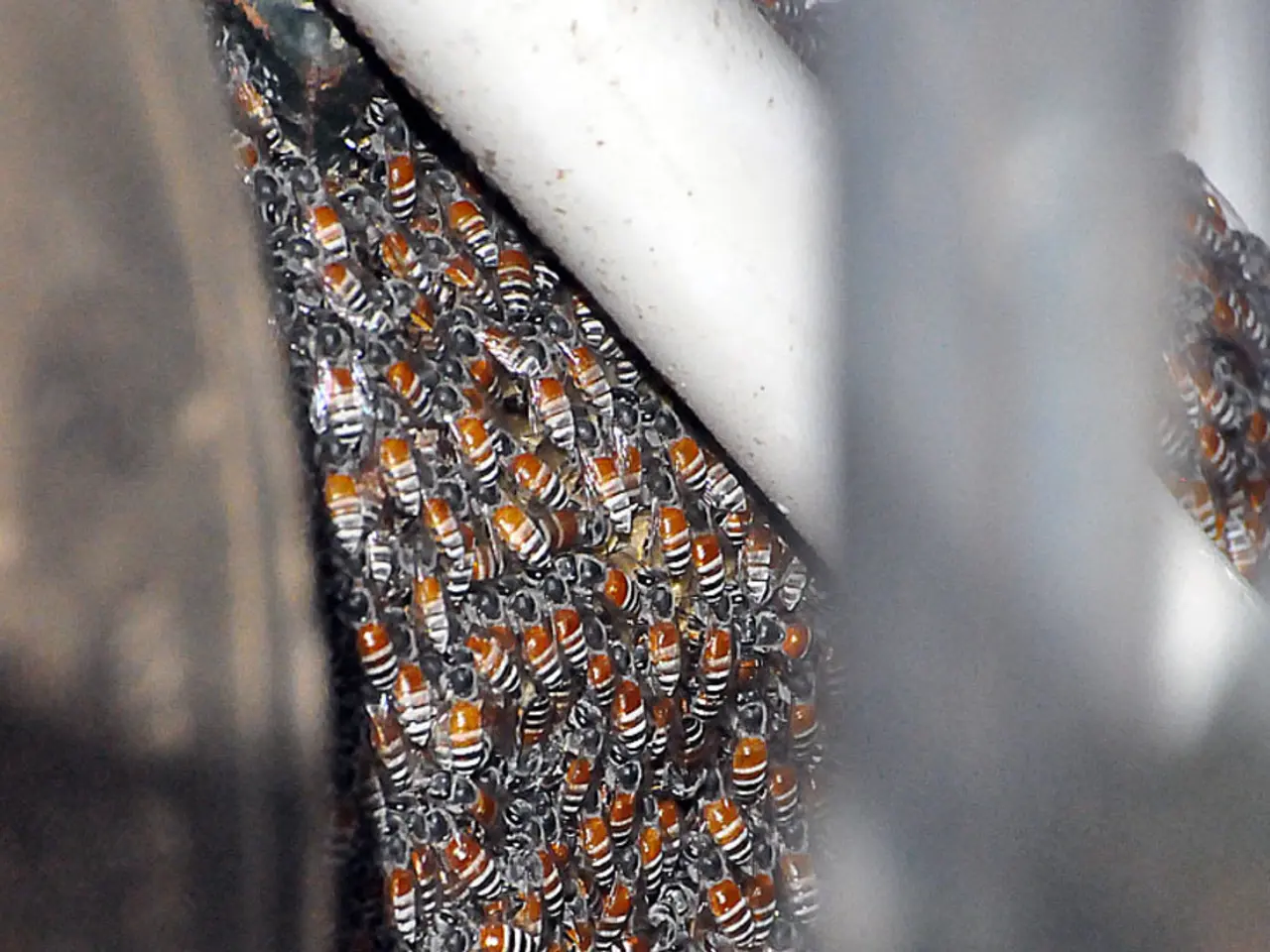Alarming Predicament for Honey Bees: Understanding the current challenges facing our furry pollinators
In the heart of our bustling world, the humble honey bee is facing a significant crisis. Climate change, habitat loss, diseases, and pesticide exposure are causing problems for these essential pollinators, impacting the production of various agricultural products worth billions.
Honey bees are instrumental in food security, pollinating crops such as avocados, blueberries, peaches, pumpkins, sunflowers, almonds, cucumbers, and more. Their drastic decline threatens food production, biodiversity, and the broader ecosystem.
The consequences of this decline are far-reaching for humans. Reduced crop yields and food diversity lead to higher food prices and decreased availability of nutritious foods. The U.S. commercial beekeeping industry lost over 60% of its colonies between 2024 and 2025, translating to around $600 million in lost revenue.
The ecological chain could also suffer as plants dependent on bee pollination decline, impacting herbivores and carnivores, potentially triggering species and habitat losses. Agricultural income decline, rural unemployment, potential food crises, and social unrest may result from reduced pollination and food shortages.
Key factors contributing to the decline include Varroa destructor mites resistant to pesticides, habitat loss, climate change, pesticide exposure, and diseases. The continued decline of commercial honey bees, which pollinate over 100 crops in the U.S. alone, poses a substantial risk to global food security and agricultural economies.
However, there are ways to help support the honey bee population. Planting pollen-rich plants, creating bee baths or water feeders, and donating to organisations like The Bee Conservancy, can all make a difference. The Bee Conservancy, based in New York City, focuses on protecting the bee population and educating the public on their importance.
The honey bee population in the United States is in an overall decline, with the number of colonies decreasing from 2.89 million in October 2022 to 2.71 million in April 2023. Scientists are breeding honey bees to create ones that can identify and bite the legs of varroa mites, making them incapable of attaching to the bees.
Despite their small size, the average honey bee is around 0.5 inches long, while the queen bee is around 0.8 inches long. Domesticated honey bees make their homes in bee boxes and have their honey collected by beekeepers without harming the bees.
The decline in the honey bee population is not a future prediction but a reality that we are facing now. As Shahi Mahonaj '24, the Gardening Club Co-President at Bronx Science, states, "honey bees play an important role in supporting our population and should be supported in return." Let's do our part to help these vital insects and secure our food supply for the future.
- In the news, the continued decline of the honey bee population is causing concerns, as they pollinate crops like avocados, blueberries, and almonds, worth billions.
- The video series "Save the Bees" offers insights into the problems faced by honey bees, such as pesticides, diseases, and climate change.
- An opinion editorial in a popular lifestyle magazine argues that supporting environmental science through initiatives like planting pollen-rich plants is essential for the survival of honey bees.
- An editorial in an educational and self-development journal highlights the importance of understanding the impact of climate-change on honey bees in our environmental-science curriculum.
- The food-and-drink section of a major news outlet discusses how reduced pollination due to honey bee decline could increase food prices and decrease availability of nutritious foods.
- A feature on fashion-and-beauty platforms focuses on beekeepers who combine honey production with sustainable fashion, promoting personal growth through entrepreneurship and environmental conservation.
- The home-and-garden section of a leading online learning platform offers a course on building DIY bee baths or water feeders to help support the local honey bee population.




